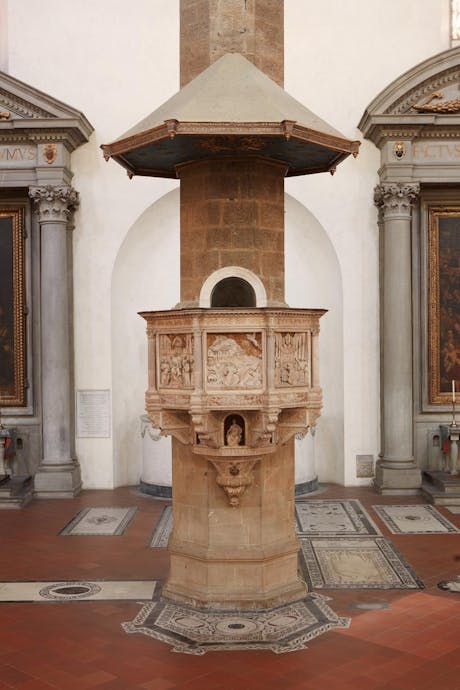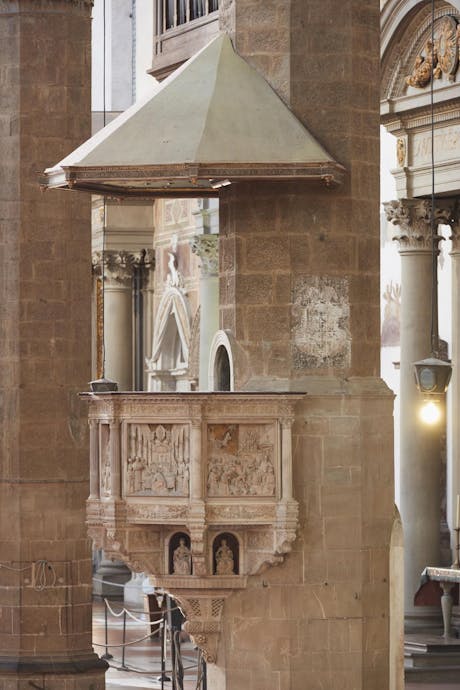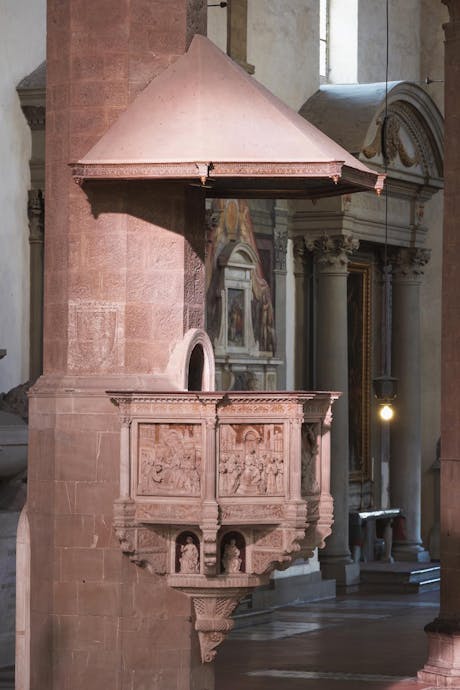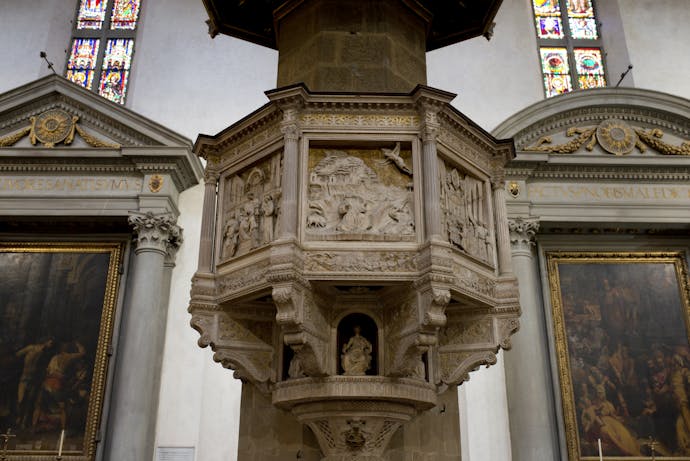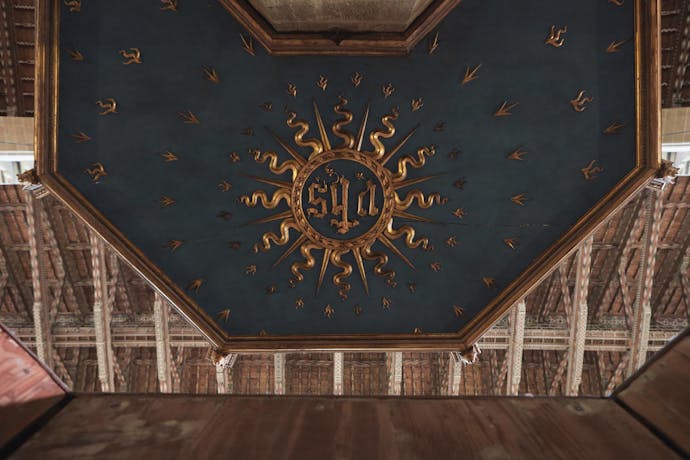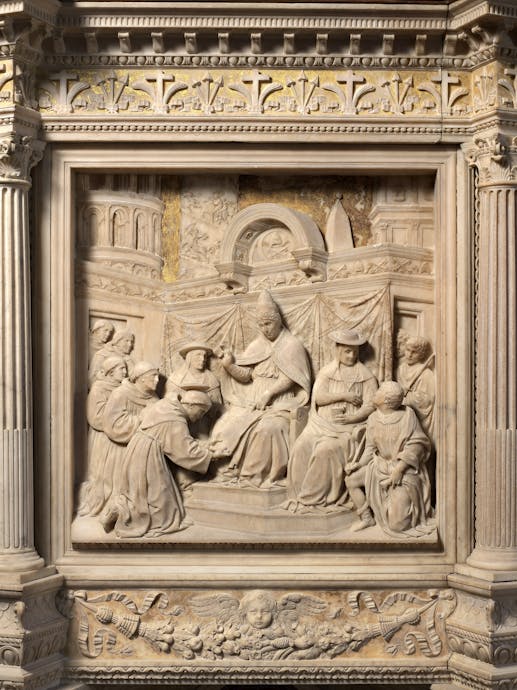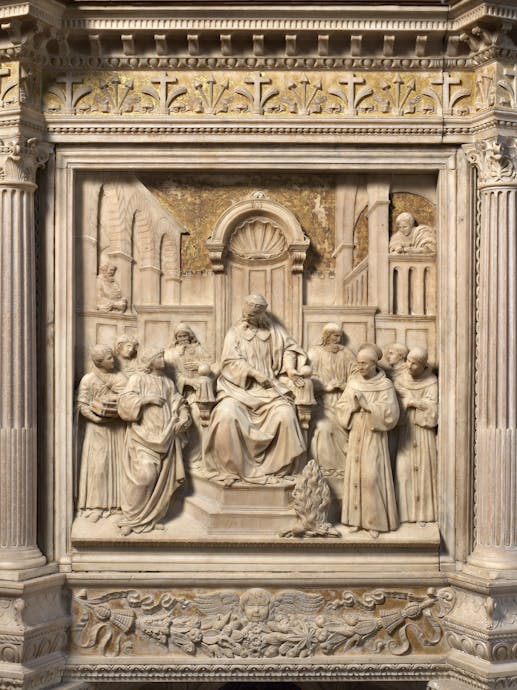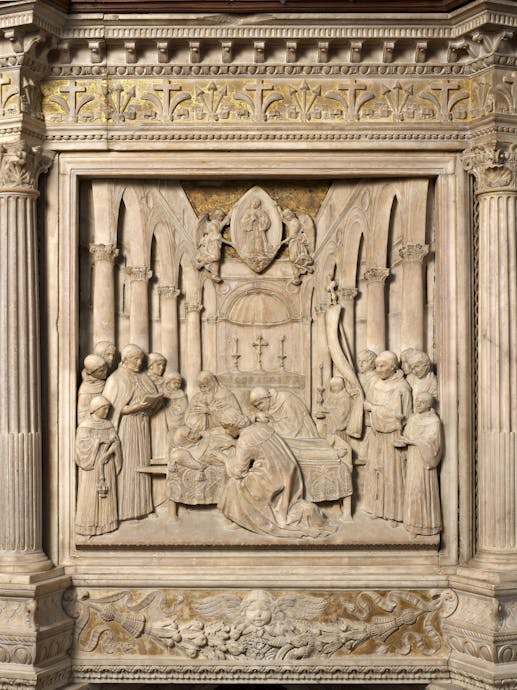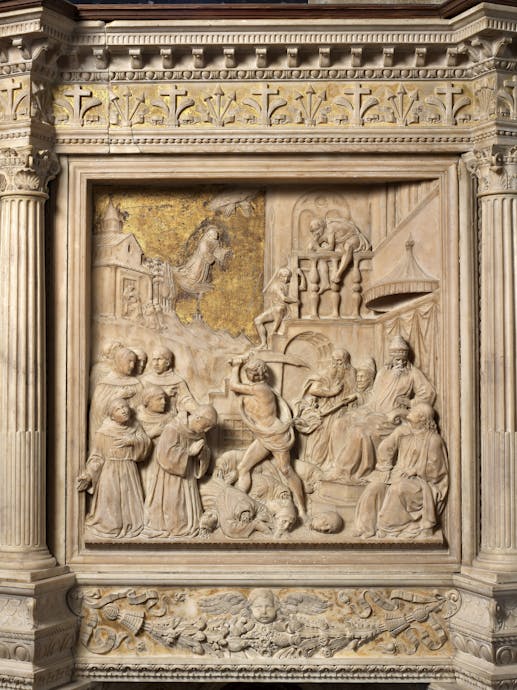Benedetto da Maiano
Artist: Benedetto da Maiano (Maiano, Fiesole 1442 - Florence 1496) and workshop
Title: Pulpit with Stories from the Life of St. Francis
Date: 1481-1487
Material and technique: white Seravezza marble, red Maremma marble with gilding, lacquer and glass inlay (pulpit); wood (door); gilded and painted wood (canopy)
Dimensions: 254 x 179 x 140 cm (pulpit); 181 x 62 cm (door); 100 x 290 x 284 cm (canopy)
Position: Basilica of Santa Croce, against the third pier in the south aisle
This pentagonal pulpit resting on three sides of the third octagonal pier was commissioned by wealthy Florentine merchant and Medici supporter Pietro Mellini, whose family lived in the Santa Croce neighbourhood. Adopting an innovative and extremely daring structure to which his architect and engineer brother Giuliano may not have been totally extraneous, Benedetto da Maiano built the steps leading up to his pulpit in the thickness of the pier, requiring that he structurally reinforce its base.
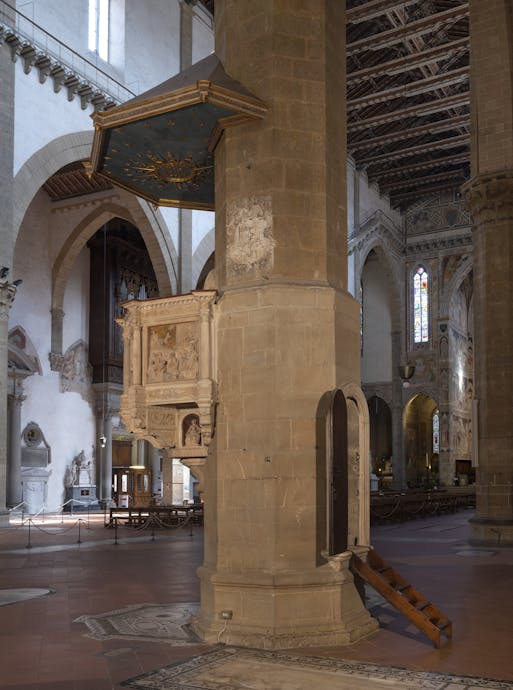
Arrangement for accessing the pulpit
This was because the area under Mellini's patronage was limited to the ribattimento, i.e. the projection of the pulpit's octagonal shape on the floor, marked out in white and coloured marble and containing the patron's gravestone.
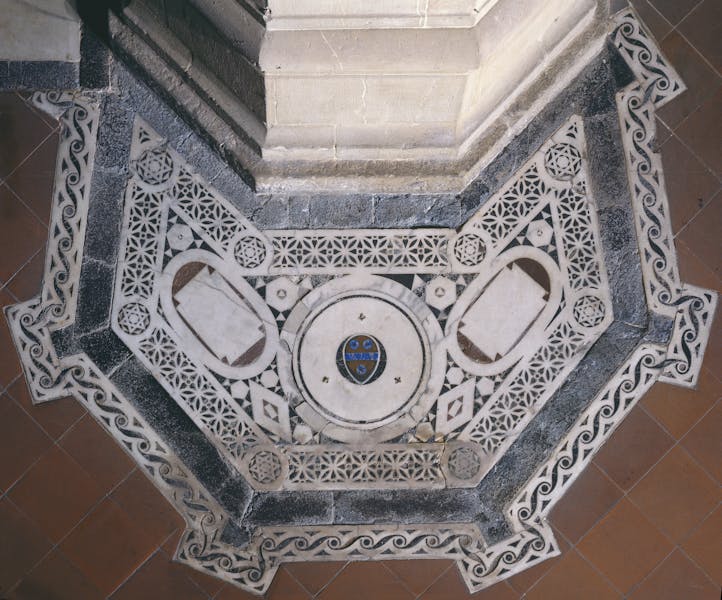
Mellini family tomb slab at the base of the pier against which the pulpit is built
The pulpit's polychromy was partly recovered in the course of restoration carried out by the Opificio delle Pietre Dure in 1998–9. The pulpit, resting on consoles, comprises five highly sophisticated and technically intricate framed bas-relief panels separated by fluted colonettes, depicting episodes from the Life of St. Francis: Confirmation of the Franciscan Rule; Saint Francis Preaching before the Sultan (Trial by Fire); Stigmatisation of Saint Francis; Death of Saint Francis; and Martyrdom of the Franciscan Friars in Morocco. Small niches beneath the panels contain allegories of the Virtues enthroned: Faith, Hope, Charity, Temperance and Justice.
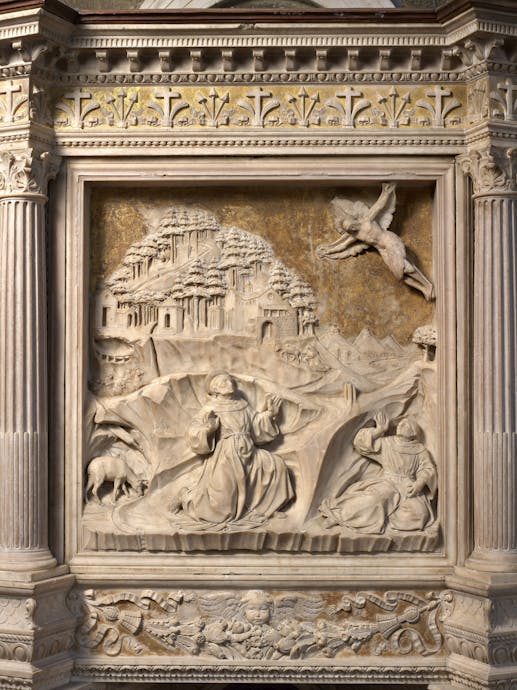
Benedetto da Maiano, Stigmatisation of St. Francis, scene from the Pulpit with Stories of St. Francis, 1481-7. Basilica of Santa Croce, nave
The pulpit's complex gestation is borne out by a further relief in terracotta, now in the Bode Museum in Berlin, depicting The Double Dream of Pope Innocent III, a study for a panel that was never made, whilst the V&A in London has three terracotta models for the existing panels.
The pulpit played a crucial role in a church in which (before Vasari's alterations) a rood screen separated the congregation from the celebrants, because it was from there that the friars would preach to the faithful assembled in the body of the church.
